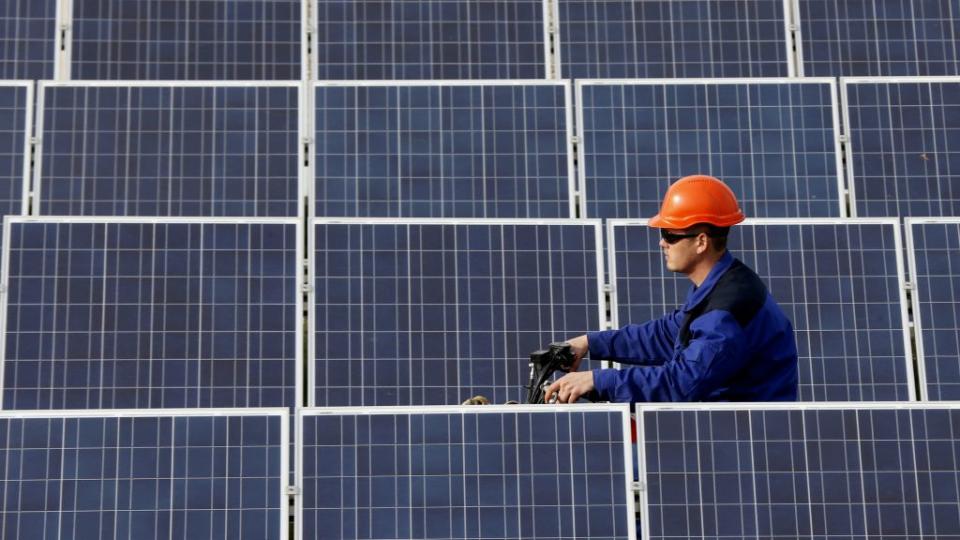The mostly great year in US jobs, in five charts and a map

In a year of nuclear threats, #MeToo, and an all too House of Cards-like White House, the US job market hummed along nicely. Jobs were plentiful, as the post-financial crisis recovery continued apace.
Taking a step back, these were the year’s biggest jobs stories.
1️⃣ The Obama job boom continued under Trump
From 2011 to 2016, the US economy added about 2.4 million jobs per year. In 2017, the labor market will probably end the year having created a little over 2 million jobs. The US will likely close the year around its lowest unemployment rate in 15 years, 4.1%.
Trump pledged to be the “greatest jobs president that God ever created.” So far, he has demonstrated the well-established fact that presidents don’t actually have that much control over the job market.

2️⃣ It was a better-than-usual year for low-wage workers
Low-income workers have suffered for most of the past several decades, but some progress was made in 2017. Jed Kolko, chief economist of job-search site Indeed, found that wages had increased by 3.6% this year for workers in lower-wage industries, like food service, outpacing wage growth in higher-wage industries, like scientific research. The gains for low-income workers were also bigger than they received in 2015 and 2016.
Wage growth for workers without high-school degrees also grew faster than those with college degrees. We shouldn’t get too excited about this, though. College graduates still make more than twice as much, in absolute terms, as those without high-school degrees, and are only a third as likely to be unemployed.

3️⃣ It was an even better year for millionaires
In the decade since the global financial crisis, the world has gained 8.7 million new millionaires—close to three-quarters of whom are in Europe and the US.
Meanwhile, more millennials are entering the ranks of the ultra-rich, signaling that future income inequality will likely be even worse. In 2017, there were 46 billionaires under 40 (more than double the number in 2003), and they were worth, on average, a cool $4.1 billion.

4️⃣ Boomers are, er, booming
If boomers are any indication, retiring may soon be a thing of the past. Since this time last year, 915,000 more boomers got jobs, and more than a third of them went to women. By 2024, the BLS projects that there will be twice as many women over 55 in the workforce as those under 24.
And this isn’t just true in the US—older women in Japan are joining the workforce in droves, and saving the economy in the process.

5️⃣ Office temp jobs surged and retail jobs disappeared
If you were looking for a temp job in 2017, you were in luck. If you weren’t, you may have been forced into one.
The US economy created 116,000 new temporary office jobs over the past year, an increase of 3.9%. These jobs offer employers flexibility with their headcount, but come at a steep cost of stability for workers. The increase in temp jobs is one of the reasons the business services industry created more than half a million jobs, more than any other industry.
What’s more, 2017 appears to mark the start of the slow death of in-store retail at the hand of Amazon and other online sellers. The retail industry lost a net 23,000 jobs during the year, with department stores and other general merchandising stories alone shedding nearly 60,000 jobs. Some of these losses were made up by specialty retailers less affected by online retailers, like building supply stores and car dealerships, adding positions.
In contrast, 2017 brought over 100,000 new jobs in transportation and warehousing, many of which created by the online retail industry.

6️⃣ Texas, Nevada, and Utah saw the fastest job growth
Texas has reaped rewards from the “shale revolution”—jobs from fracking have created some of the fastest wage growth nation-wide. But Texas’ economic success isn’t just about oil. Even after oil prices plunged in 2014, the Texan economy has continued to boom thanks to technology, education, and healthcare. What’s more, Texas has thrived under globalization: counties along the Texas-Mexico border gained from replacing low value-added manufacturing jobs with logistics, warehousing, and government jobs in border security.
Meanwhile, unemployment is so low in Utah, at just over 3%, that companies in a wide range of sectors—and especially technology—are finding it hard to hire workers. Nevada’s hard-hit construction market has recovered in recent years, and the state’s outsize tourism industry also benefits from a broadly buoyant economy.


Sign up for the Quartz Daily Brief, our free daily newsletter with the world’s most important and interesting news.
More stories from Quartz:

 Yahoo Finance
Yahoo Finance 